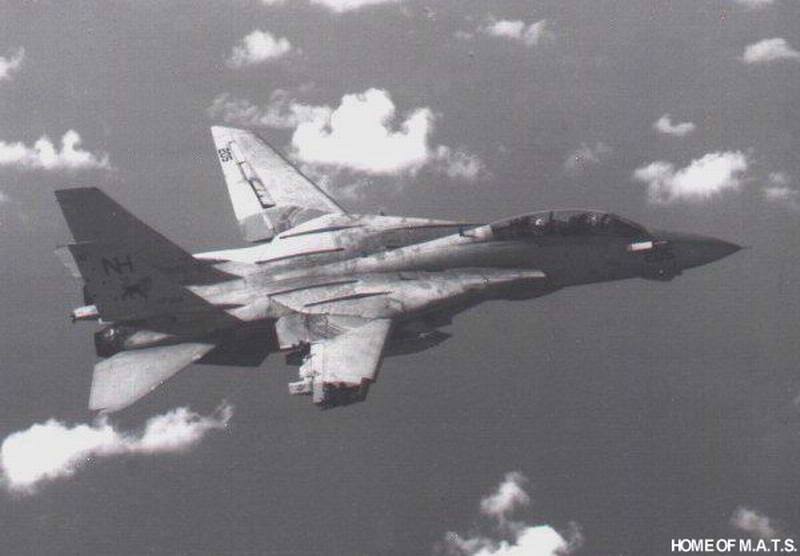Grumman did the test in the very early days of the airplane at the Navy’s insistence. The brass wanted to know if the airplane could be controlled with full wing asymmetry. Grumman insisted that their interlocks (synchronizer shaft, dual drive motors, etc.) would prevent an airplane with wing asymmetry, but the brass wanted to know.
Yes, it’s controllable, though at a bit higher speed.
The big control input is the horizontal stabilizer deflection. Lateral stick to control the differential lift as displayed in the horizontal stab position.
When the airplane got older, we had a few where the wing sweep system got stuck (usually back at 68 degrees, full aft) but the synchronization system kept them symmetrical.
The F-14B differed from the A in engines, and removal of the glove vanes. so, if you see an airplane with glove vanes extended, it’s an A.
The nozzles of the GE F-110 are noticeably different from those of the TF-30, that’s the quickest way to tell A from B.
The D had the same engines, but dual chin pods, with an IRST and TCS. The A and B had a single chin pod with just TCS.
So, if you see the F-110 nozzles, it’s a B or D, and you need a peek under the nose to see the number of chin pods.



